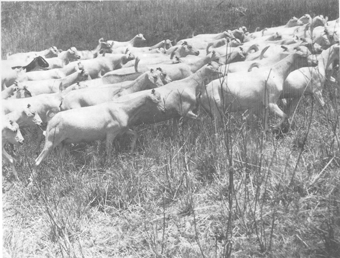
Synonyms. Africander; Afrikaner [both now uncommon].
Origins. Conformation and colour suggest a crossing of Dutch and Indian goats with local Bantu stock as the parents of this goat. The "improved" type dates from the 1920s although the name Boer was first used in the mid-19th century to distinguish short-haired goats from the recently imported Angoras. The modern Boer was developed in the Eastern Cape Province of the Republic of South Africa. A breed society was established in 1959.
Sub-types and races. Ordinary; Long-haired; Polled; Native; Improved ("Ennobled"). The Pafuri goat of western Mozambique results from crossing of a small number of Boer males on the Landim.
Distribution. Southern Africa. The Republic of South Africa has exported animals to Lesotho, Swaziland (Figure 21), Botswana (Figure 22), Mozambique, Zimbabwe and Namibia. Also in Kenya and in very small numbers in Burundi. Imported to Tanzania (Tanganyika) in the 1950s and subsequently used, with the Kamorai in the development of a "blended" goat.

Figure 21 A Boer buck imported from South Africa to a private flock in Swaziland
A "few dozen" in West Germany (from where exported to South-east Asia and to Rwanda). Total population might be 5.0 mil1ion of which about 2.2 million of "improved" type.
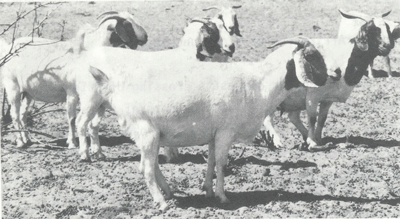
Figure 22 Boer females imported from South Africa to the Sunnyside Ranch of the Animal Production Research Unit in Botswana (note horn shape in doe on right)
Ecological zones. The Boer does best in arid areas although the improved type, at least, does not do well in really hard conditions outside the Republic of South Africa.
Management systems. Agro-pastoral, pastoral and ranching. Flock sizes large to very large under ranching conditions.
Physical characteristics. Large size 75-80 cm. Weight: male 120-140 kg; female 70-90 kg.
Head strong, forehead prominent (Figure 23), soft eyes, profile markedly convex particularly at lower end, wide nostrils.
Horns present or absent in both sexes: strong in males (black colour preferred) and of medium length with open homonymous twist with straight axis projecting backwards and outwards; lighter, scimiter shaped and backward curving in female. Ears medium-long and broad, lopped; shorter or vestigial ears encountered in common stock. Toggles absent. Beards in males but not usually maned; females not bearded.
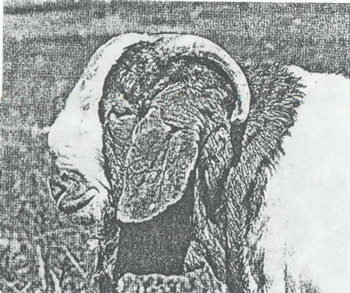
Figure 23 Profile, horns and earns of a male Boer goat
Neck of moderate length. Chest broad and deep. Withers higher than or level with sacrum. Back long, usually slightly dipped. Croup broad and long, not sloping. Strong rather short legs. Udder well developed. Testicles in unsplit scrotum.
Colour of improved type is white except for red head and part of neck: broad white blaze on face preferred. Common goats have more variable colours including spots on body and legs. Coat of short, stiff hair except long-haired type.
Products. Meat; (milk); (skins).
Productivity.
REPRODUCTION. First kidding: 12 months. Kidding interval: 12 months. Multiple births: common; single 43 per cent, twin 50 per cent, triplet 7 per cent. Litter size: 1.64. Annual reproductive rate: 1.64. Oestrus cycle: 22.0 � 0.03 days with heat lasting 26.7 hours; seasonally polyoestrus with heats longer in autumn than spring and early summer. Ovulation rate: 6.0 ± 2.6 after treatment with PMS/HCG.
Spermatogenesis commences in males at 84 days, sperm in epididymis at 140 days and spermatozoa in ejaculate at 157 days: first successful mating at 168 days. Artificial insemination successful in getting 71 per cent of does pregnant with average of 1.9 kids per birth (200 x 106 sperm per dose).
GROWTH. Birth weight: 3.0-5.0 kg; singles 4.5, twins 3.9, triplets 3.5 kg. Weight for age: male; 100 days-30 to 33, 6 months-40 to 50, 8-64, 12-92, 18-117 kg.
Weight at 100 days in improved flocks in South Africa increased from 24 to 32 kg for males and 22 to 28 kg for females between 1970 and 1982.
MILK. Lactation length: 120 days (Figure 24). Yield: when supplemented with 2.7 kg of 4:1 mixture of lucerne:maize meal does suckling singles gave 1272 g/d (160.3 kg total yield) and suckling twins 1811 g/d (228.1 kg). Composition: DM 15.7 per cent; fat 5.7 per cent; protein 3.1 per cent; lactose 6.1 per cent; ash 0.9 per cent. Hand-milked does yielded one-third (476 v 1551 g) of suckled does
MEAT. Dressing percentage: 48 at 8-10 months, 56-60 at mature ages. Carcass of 23 kg preferred from goats 6-15 months old.
SKINS. Three types are recognised: fine-fibred from short-haired goats in hot areas; medium-fibred used primarily for shoes; and coarse-fibred from long-haired goats in cold areas and used for handbags, suitcases and furniture.
NOTE: The few data available from outside the Republic of South Africa for the Boer goat usually indicate performances considerably inferior to those recorded here.
Research. Secretary, Boer Goat Breeders' Association, P.O.Box 282, Somerset East, 5850 Republic of South Africa. Other research in Germany, Botswana, Burundi, Zimbabwe and Kenya.
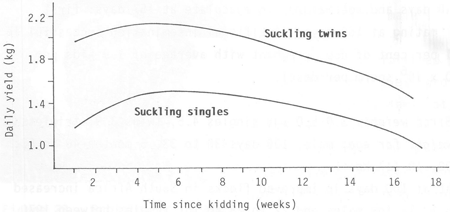
Figure 24 Lactation curves of Boer goats with different litter sizes.
References. van Rensburg, 1938; Hofmeyr, 1965; Hofmeyr et al, 1965; 1966; Skinner, 1972; Ueckermann, Joubert & Steyn, 1974; BGBA, 1984; Das, 1989; R. Lawrenz, pers.comm.
Origins. Results from crossing Boer males on Landim females. The Boers were introduced from the northern Transvaal in 1928. An attributed origin to the Nubian is probably erroneous.
Distribution. Restricted to a small area known as Pafuri (hence the type name) in south-west Mozambique near the border with South Africa and Zimbabwe. Total population is not known but numbers are probably very few.
Ecological zones. Semi-arid to arid sub-tropical with annual precipitation of less than 400 mm falling in one short season.
Management systems. Agro-pastoral to pastoral transhumant. The area of occurrence is thinly populated and there is limited cultivation of millet and some sorghum.
Physical characteristics. Large size. Weight: male 60 kg; female 43 kg.
Head with convex profile.
Horns in both sexes: well developed in males and diverging; smaller and scimitar shaped in females. Ears medium-long and lopped or semi-lopped with rounded tips. Beards in males and females.
Neck strong and well set on both top and bottom lines. Back straight. Legs strong and well developed. Udder well rounded with large teats.
Colour very variable. Coat short or long.
Products. Meat; milk.
Productivity.
REPRODUCTION. First kidding: 1053 days on station. Litter size: 1.09; first cross Landim x Pafuri females 1.43.
GROWTH. Birth weight: 2.4 kg. weight for age: 30 days-4.2, 90-8.0, 150-10.1, 365-16.7, 550-25.8, 730-30.8 kg.
MILK. Yield: 398 ml/d during third month of lactation in foundation does (n=47) on station; station born primiparous does (n=16) averaged 305 ml/d in third month.
Research. Formerly at Instituto de Reproduçao e Melhoramento Animal, CP 1410, Maputo, Mozambique.
References. de Pinho Morgado, 1954; 1959; Rocha, McKinnon & Wilson, 1990a.
Synonyms. Bechuanaland [obsolete].
Origins. The Batswana have owned goats for a very long time, unlike most other southern Bantu peoples.
Sub-types and races. A similar goat to the Ndebele of south-west Zimbabwe with which it intergrades along the Botswana/Zimbabwe border.
Distribution. Botswana, mainly along eastern and southern boundaries. Also in Zimbabwe and Bophuthatswana close to common borders. Total goat numbers in Botswana were estimated at 1.2 million in 1986, mostly of this type, and 97 per cent of these were in the traditional sector. Numbers were 783 000 in 1983, down from 1.0 million in late 1960s.
Ecological zones. Semi-arid to arid areas with one short, unreliable rainy season in summer and as many as 50 nights per year with temperatures below 0°C. Within these zones mainly distributed in scrub acacia areas with relatively little ground cover.
Management systems. Pastoral, agro-pastoral and a few flocks on commercial and larger modernised traditional holdings. Less than 3 per cent of goats are subject to modern management but 70 cooperative groups comprising 1648 small farmers (42 693 goats and sheep combined) receive extension assistance in the form of dipping, vaccination, castration and other veterinary services. Flock sizes average 20.9 in the traditional sector, 108.2 in the modern or commercial sector (Table 20). In Botswana 53 000 of 80 500 traditional farms own goats. Flock structures, related mainly to meat production: females 70.1 per cent (51.9 per cent breeding > 1 year), males29.9 per cent (14.7 percent > 1 year).
The ram subsidy programme of the Animal Production Division of the Ministry of Agriculture supplied 2 Tswana and 18 Boer x Tswana bucks to producers in 1985 (compared to 90 pure Boers).
Table 20 Goat flock size distribution in Botswana
| System and Flock size | Percentage of farms | Percentage of goats |
| Traditional (n = 53 000) | ||
| 1- 5 | 18.1 | 2.9 |
| 6- 10 | 20.8 | 8.0 |
| 11- 20 | 28.7 | 20.3 |
| 21- 30 | 14.0 | 16.5 |
| 31- 40 | 7.5 | 12.4 |
| 41- 50 | 4.0 | 8.4 |
| >50 | 6.9 | 31.5 |
|
Commercial (n = 270) |
||
| 1- 50 | 37.1 | 9.2 |
| 51-100 | 29.6 | 20.6 |
| 101-200 | 18.5 | 26.0 |
| > 200 | 14.8 | 44.2 |
Physical characteristics. Large size 60-75 cm (male castrate 73.2 ± 0.76 cm; female 60.9 ± 3.54 cm). Weight: male 43.9 ± 6.6 kg; female 40.0 ± 4.9 kg.
Head not very strong, forehead flat to prominent, profile straight and relatively short (Figure 25).
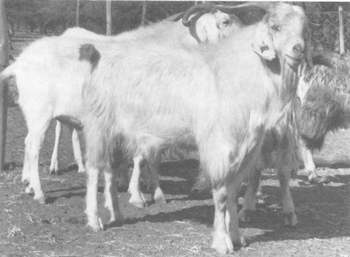
Figure 25 Male Tswana goat owned by the Animal Production Research Institute
Horns: 69 per cent of males have horns of medium length, projecting backwards and then outwards; 76 per cent of females have lighter, narrower horns. Ears medium-long and broad, lopped.
Neck rather long. Chest fairly broad but shallow. Withers level with sacrum. Back straight. Croup has moderate slope. Legs relatively long.
Colour highly variable with mixed colours predominating (40 per cent), whites next most common (29 per cent), followed by blacks (17 per cent), browns (8 per cent), and greys (6 per cent). Coat short and fine (39 per cent), intermediate and wavy (47 per cent) or long (14 per cent).
Products. Meat; milk.
Productivity.
REPRODUCTION. Kidding interval: usually once a year; considered to be related to availability of food as a function of rainfall but conception is very delayed in this context in comparison to goats in similar ecoclimatic zones and it is possible that there are some photoperiod effects in this type of goat (Figure 26). Litter size: 1.50 (n=426) on research station, 1.37 (n=285) in traditional system. Fertility: 82 per cent of does exposed (n=521) to bucks kidded over 8 year period (1976-1983) on research station, in traditional system 95 per cent of 298 breeding age females kidded in 1986. Ministry of Agriculture estimated 70.3 to 86.4 "kidding percentage" nationwide from 1980 to 1985.
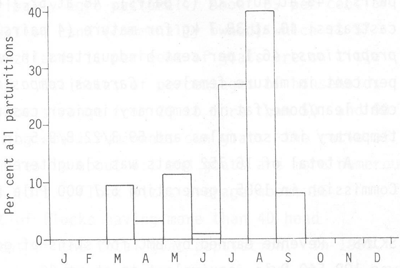
Figure 26 Birth distribution in a Tswana traditional flock with continuous buck presence from 1981 to 983.
GROWTH. Birth weight: 2.8 kg (n=426) on research station; in traditional system male single 4.3 ± 1.5, twin 4.3 ± 1.0 and female single 3.6 ± 0.9, twin 3.7 ± 1.0 kg. Weight for age: 4 months-13.4 (n=297, research station), 5-16.1 (single male 17.8, twin male 15.4, single female 16.2, twin female 14.9 in traditional system), 10-22.5 (single male 24.4, twin male 24.5, single female 22.6, twin female 21.5 in traditional system), 12-29.6 (n=251, research station), 18-34.5 kg (n=184, research station). Average daily gain: birth-150 days - single males 93.3, twin males 84.2, single females 83.7, twin females 74.4 g in traditional system; birth-300 days - 67.1, 67.4, 63.3, 59.2 g for respective sex and birth type classes in traditional system.
MILK. Lactation length: up to and in excess of 180 days in traditional system. Yield: 284 g/d in addition to that taken by kids in traditional system; highest yielding goat averaged 960 g/d for 1 month.
MEAT. Dressing percentage: 43 for live weight of 23.9 kg (milk teeth), 43 at 28.4 kg (1 pair permanent incisors), 44 at 34.0 kg (2 pairs), 45 at 40.5 kg (3 pairs), 48 at 52.7 kg (4 pairs) for male castrates; 40 at 38.7 kg for mature (4 pairs) females. Carcass proportions: 46.1 per cent hindquarters in mature male castrates; 49.9 per cent in mature females. Carcass composition: 58.3/21.2/14.3 per cent lean/bone/fat in temporary incisor castrates, 59.0/22.2/12.5 in temporary incisor males and 59.3/22.8/9.5 in full mouth females.
A total of 16 752 goats was slaughtered by the Botswana Meat Commission in 1985, generating 537 000 Pula for farmers.
SKINS. Revenue earned by BMC for skins of goats slaughtered in 1985 was 108 540 Pula, equivalent to about 20 per cent of their revenue from the meat of the same animals.
Research. Animal Production Research Institute, Private Bag, Gaborone, Botswana.
References. Owen et al, 1977; 1978; Owen & Norman, 1977; APRU, 1984; Gray, 1987.
Sub-types and races. The Swazi is part of the Nguni group of which other varieties occur in the Zulu areas of the Republic of South Africa.
Distribution. Swaziland and adjoining areas. The 1985 census showed a population of 268 422 goats, down from 333 895 in 1983 and similar to the 1970 number of 259 047.
Ecological zones. Sub-tropical sub-humid areas.
Management systems. Principally agro-pastoral. About 89 per cent of goats are found on Swazi Nation Land (communally owned) which is 57 per cent of the area of Swaziland: 11 per cent of goats are on title deed (privately owned) land. Estimates of percentages of households on communal land that own goats range from 29 to more than 50, and 90 per cent of households owning small ruminants own goats: the ratio of goat- to sheep-owning families is about 6:1 and goats are more numerous than sheep in the ratio of 10:1. Flock sizes average about 16 animals, with 6.3 per cent of flocks having more than 40 head accounting for 20.6 per cent of the total goat population. In 1983, flocks comprised 32.3 per cent of animals younger than 6 months and, of animals older than this, 48.0 per cent were females, 13.8 per cent entire males and 5.9 per cent castrated males. Flock structure for a sample of 160 flocks is given in Table 21.
Physical characteristics. Large size. Weight: 30-40 kg; castrates to 70 kg.
Table 21 Goat flock structure and breeding status from 160 multiple owner flocks in Swaziland
| Variable | Male | Female | Total | |||
| n | Per cent | n | Per cent | n | Per cent | |
| Age (years) | ||||||
| <1 | 289 | 11.0 | 376 | 14.3 | 665 | 25.2 |
| 1-2 | 203 | 7.7 | 687 | 26.1 | 890 | 33.8 |
| 2-6 | 53 | 5.8 | 782 | 29.7 | 935 | 35.5 |
| >6 | 24 | 0.9 | 120 | 4.6 | 164 | 6.2 |
| Breeding status | ||||||
| immature | 269 | 10.2 | 376 | 14.3 | 645 | 24.5 |
| breeding | 237 | 9.0 | 1589 | 60.3 | 1826 | 69.3 |
| castrate | 163 | 6.2 | 0 | 0.0 | 163 | 6.2 |
| Total population | 669 | 25.4 | 1965 | 74.6 | 2639 | 100.0 |
Horns present in both sexes: strong, moderately heavy and long in males with homonymous twist projecting sideways or backwards and outwards (Figure 27); lighter, scimitar shaped and backward curving in females. Ears medium-long (16 cm) and broad, lopped.
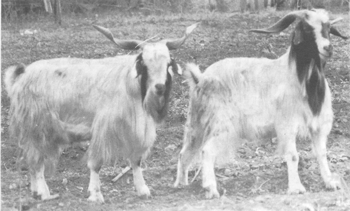
Figure 27 Swazi bucks in the traditional agropastoral system on Swazi Nation Land
Colour variable but whole colours (grey, black, white) predominate. Hair short and coarse or long and fine; longer breeches on both fore and hind legs of males and females not uncommon.
Products. Meat.
Productivity.
REPRODUCTION. First kidding: 344 days in range 263-428 days. Kidding interval: 268 days (range 192-348 days, n=204); first to second parity 273 (203-348) days, subsequent parities 253 (192-320) days. Multiple births: common; 69.0 per cent (52.3 per cent of young) single, 30.4 per cent (46.2 per cent of young) twin, 0.6 per cent (1.4 per cent of young) triplet. Litter size: 1.32, being 1.13 in primiparous does and 1.39 in multiparous ones. Annual reproductive rate: 1.80, increasing from 1.54 at first parity to 2.01 at higher parities. Fertility (=does kidding/does in flock): 63 per cent, 54 per cent in maiden does and 70 per cent in females already having kidded at least once.
Kidding occurs all the year but with a peak in the winter months of May-Jul, associated with conception during the rains.
GROWTH. Birth weight: 1.9 ± 0.14 (s.d.) kg (n=482); males 2.0 ± 0.09, females 1.8 ± 0.10. weight for age: 6 months-8.0, 12-14.5, 24-24.0, 36-35.2 kg. Average daily gain: birth-3 months - 68, birth-6 months -60, birth-12 months - 50 g.
MEAT. Carcass of 10-12 kg at 18-24 months.
Research. Animal Production and Health Department,
University of
Swaziland, P.O. Luyengo, Swaziland.
References. Lebbie & Mastapha, 1985; Lebbie, 1987; Lebbie & Manzini, 1989.
Synonyms. This goat appears to have been inadequately described in the past and has been remarked to occur in the "Gwanda-Tuli area of Rhodesia" and in "Matabeleland". The term Ndebele is here proposed for the first time.
Sub-types and races. This is similar to the Tswana.
Distribution. South-west Zimbabwe. Small goats with shorter ears, similar to the Small East African group, are found in the remaining areas of Zimbabwe.
Ecological zones. Semi-arid.
Management systems. Principally agro-pastoral. There were only 6200 goats on large scale commercial farms in Matabeleland in 1982 and 3100 on small scale commercial farms.
Physical characteristics.
Large size. Weight: males 50-55 kg; females 39 kg.
Head rather fine, forehead flat, profile straight or dished (Figure 28).
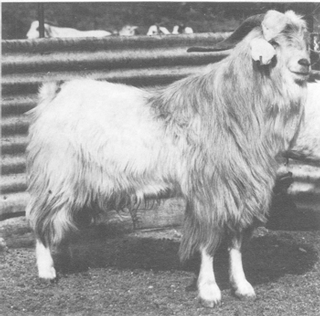
Figure 28 Ndebele male goat at Matopos research station, Zimbabwe
Horns present or absent in both sexes: males flattened in cross-section, directed backwards with little lateral tendency; females finer and scimitar-shaped, some females have only scurs. Ears medium-long and broad, lopped with tip occasionally turned up. Beards in both sexes. Males have top knot.
Neck short. Chest shallow. Withers lower than sacrum. Back short and dipped. Croup short and sharply sloping. Legs long and lightly boned.
Colour variable with whites and creams predominant but many others and mixed colours common. Coat short or long, males may have "cape" over shoulders, chest and fore legs.
Products. Meat.
Productivity.
REPRODUCTION. Multiple births: 67.0 per cent of does mated gave birth to more than one young at Matopos; of does kidding, single 36.4 per cent, twin 62.0 per cent, triplet 1.6 per cent. Litter size: 1.54 (n=549). Fertility (=percentage of dams giving birth): 87.5 per cent. Birth rate (=progeny born/does mated): 159.9.
GROWTH. Birth weight: 2.53 kg (n=905). Weight for age: 3 months-13.9, 5(weaning)-15.9 (twins 13.5), 18-31.3 (twins 28.6), 30-35.0, 42-38.7, 54-39.1 kg, data from weaning relate to females only; 140 days(weaning)-15.2 kg (n=759). Average daily gain: birth-12 weeks -109, birth-20 - 97, post-weaning - 39g.
Phenotypic correlations among growth traits at Matopos were 0.45, 0.46 and 0.21 for birth and weights at 12 weeks, weaning (150 days) and 18 months and 0.29 and 0.31 for birth weight and daily gains from birth to 12 weeks and birth to weaning.
MEAT. Dressing percentage: 43.7 at live weight of 30.9 kg in castrated males at about 24 months; 43.5 at live weight of 31.4 kg (n=292) in castrated males at about 23 months.
Research. Matopos Research Station, Private Bag K5137, Bulawayo, Zimbabwe.
References. Arrowsmith & Ward, 1981; Tawonezvi & Ward, 1986.
Synonyms. Mozambique ("Landim" = Portuguese "Landrace").
Origins. Possibly has some early incorporation of European blood.
Sub-types and races. The Pafuri in Gaza Province of western Mozambique is a Boer x Landim derivative.
Distribution. Mozambique, south of the Limpopo and in Tete Province.
Ecological zones. Semi-arid to sub-humid monomodal rainfall area in sub-tropical southern Mozambique.
Management systems. Sedentary agro-pastoral with cultivation of annual subsistence crops being the dominant farm enterprise. An urban system is developing rapidly. Total population of this type of goat is probably less than 400 000.
Physical characteristics. Fairly large size 65 cm. Weight: male 50 kg; female 35-40 kg.
Head fairly heavy, concave profile in females, slighty convex in males.
Horns in both sexes: 96 per cent of all animals but 31 per cent have only rudimentary horns or scurs; heavier in males than females but grow upwards and backwards in both sexes; length 11.3 cm, males 2.3 cm longer than females. Ears medium-long, carried erect or horizontal, 13.3 cm (Figure 29). Toggles present in 7 per cent of both sexes. All males have beard but only 12 per cent of females. Male has short stiff mane extending down back line.
Neck short and thick. Chest well developed, girth measurement exceeding withers height considerably at all ages (Table 22). Back short. Croup fairly long but sloping. Legs medium length.
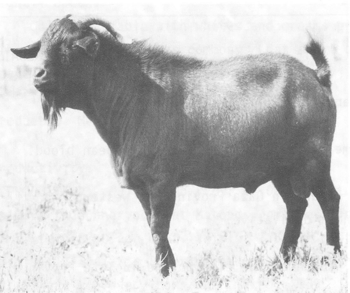
Figure 29 A male Landim goat at Chobela Research Station, Mozambique
Colour variable, commonly dark brown (36.3 per cent), black (23.6 per cent), pied (23.6 per cent), white (4.5 per cent), yellow (4.5 per cent) and several combinations of colours. Coat usually short and fine.
Products. Meat.
Table 22 Body measurements and body mass of female Landim goats
|
Age |
|
n |
Shoulder height (cm) |
Ches girth |
Weight (kg) |
|||
|
Pairs
permanent incisors |
Months |
X |
s.d. |
X |
s.d. |
X |
s.d. |
|
|
0 |
<14.3 |
9 |
49.7 |
4.3 |
63.1 |
5.2 |
19.4 |
3.4 |
|
1 |
14.3-19.8 |
7 |
52.4 |
4.8 |
69.3 |
8.0 |
26.6 |
7.3 |
|
2 |
19.8-24.5 |
21 |
55.7 |
3.6 |
72.5 |
4.5 |
30.7 |
4.9 |
|
3 |
24.5-32.0 |
32 |
53.5 |
4.0 |
73.5 |
3.7 |
31.8 |
4.0 |
|
4 |
32.0-42.0 |
22 |
57.7 |
3.1 |
78.6 |
3.7 |
37.2 |
5.1 |
|
Aged |
>42 |
10 |
57.5 |
4.8 |
80.1 |
4.5 |
38.5 |
6.1 |
Productivity.
REPRODUCTION. First kidding: 781 � 319.3 (s.d.) days
(n=175). Kidding interval: 373 � 167.1 (s.d.) days (n=255). Multiple
births: common. Litter size: 1.57 � 0.53 (s.d.) (n=350). Annual
reproductive rate: 1.75 kids per doe. Age at first kidding and kidding
interval controlled by station management.
GROWTH. Birth weight: 2.34 � 0.441 (s.d.) kg (n=464); males
2.5 kg, females 2.3 kg; singles 2.5 kg, multiples 2.3 kg; kids born in rains and
the early part of the dry season are heavier than those born in the late dry
season. Weight for age: 90 days-9.6, 180-14.3, 365-22.0 kg. Average
daily gain: birth-90 days - 76, 90-180 - 53, 180-365 -52, birth-365 - 54 g.
Research. Institute of Animal Production, CP 1410,
Maputo, Mozambique.
References. Wilson, Murayi & Rocha, 1989; Rocha, McKinnon & Wilson, 1990a.
Synonyms. Shukria (Eritrea).
Origins. The Nubian is one of a group of similar goats common throughout the Middle East and extending as far eastwards as India. The centre of origin of this type was most likely in Iran during Assyrian times. It is not likely that it is descended from the Himalayan tahr as, although the tahr male will mate with goat females, foetuses are aborted. Similarly, there is no evidence that the Nubian has at some time crossed with the Walia Ibex in Ethiopia.
Sub-types and races. Classed as a breed group and includes Mzabite (Algeria) and Zaraibi (Egypt) as well as the Nubian proper (Figure 30) and the Shukria. Very similar to the Damascus goat of the Near East and said also to be closely similar to the Syrian Mountain.
Common ancestor, with several other breeds, of Anglo-Nubian.
Distribution. Riverain and urban areas of the northern part of the Republic of Sudan, north of 12°N and westwards to E1 Obeid. Also in Eritrea. Similar types throughout North Africa, Near and Middle East. Population of Nubian proper estimated at 2.5 million during 1950s.
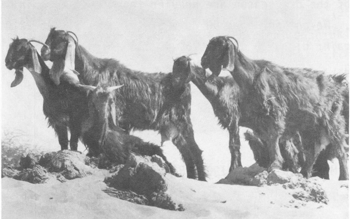
Figure 30 Female and young Nubian goats on the Nile bank at Shendi, Sudan
Ecological zones. Arid and extreme arid areas but, as noted, essentially along rivers and in urban or peri-urban areas.
Management systems. Urban. Owned primarily by urban dwellers in small numbers with flock sizes ranging from 2 to 10 animals. Usually free roaming during the day, scavenging in towns and confined and fed household wastes and occasionally concentrates at night. Also owned by settled agriculturalists on irrigation schemes along both White and Blue Niles south of Khartoum and along main Nile north of Khartoum.
Physical characteristics. Large size 70-75 cm; Shukria up to 85 cm. Weight: male 50-70 kg; female 40-60 kg.
Head small to medium, forehead prominent, profile markedly convex in males and usually so in females, depression just behind nostrils, prognathous to some degree (Figure 31).
Horns when present rather light and of medium length: simple or partially twisted backwards or divergent sweep in males; usually backward sweeping in females but some diverge. Ears long (25 cm), broad, pendulous with bottom one-third turning upwards; trail on ground when head down for feeding. Toggles, short in length, occur occasionally in both sexes. Beard usually absent. Knot of hair on forehead common.
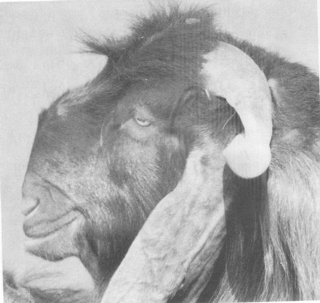
Figure 31 Topknot, profile and prognathous jaw of male Damascus goat in Tunisia
Neck moderately long and rather heavy. Chest fairly deep. High withers. Back long and straight. Croup well developed with tail set high. Long but well proportioned legs. Udder well developed.
Colour generally black except for ears which are grey or speckled grey; other colours from light fawn through to dark chocolate brown also occur. Coat variable in length, generally long, longer hair on front legs and especially on hindquarters and hind legs give appearance of breeches.
Products. Milk.
Productivity.
REPRODUCTION. Age at first oestrus: 213.2 days in Egypt. Kidding interval: 228 ± 17 days in Sudan; 6-8 months in Egypt. Multiple births: fairly prolific with high proportion of twin births; 66.1 per cent single, 30.4 per cent twin, 3.5 per cent triplet; in Egypt about 90 per cent of does lambing had multiple births. Litter size: 1.40 in Sudan; 1.38 in Egypt. Oestrus cycle: 4-30 (10) days with heat lasting 12-48 hours; oestrus throughout year with peaks in January, June and September and least activity in August and November in Sudan; least activity in March and April in Egypt. Ovulation rate: 2.67 and 2.53 in 2 years in Egypt, more than half of does having more than 3 corpora lutea. Gestation period: 146.0 + 1.1(s.e.)days in of male and female Nubian kids weaned at 10 weeks and Sudan; 156.5 ± 0.66 (s.e.) days in egypt. post-partum anoestrus: 123.5 days following 84 days suckling in Egypt.
Table 23 Monthly average body weights of male and female Nubian kids weaned at 10 weeks and fed a 29.8 per cent crude protein concentrate ad lib from 4 weeks
| Age |
Sex |
|||
| Male | Female | |||
| kg � s.d. | kg � s.d. | |||
| Birth | 2.5 | 0.5 | 2.1 | 0.3 |
| 4 weeks | 4.1 | 1.2 | 3.7 | 0.6 |
| 8 weeks | 6.0 | 2.5 | 5.1 | 1.3 |
| 12 weeks | 9.3 | 1.9 | 7.1 | 1.7 |
| 16 weeks | 9.0 | 2.0 | 8.3 | 1.7 |
| 20 weeks | 11.0 | 2.2 | 9.1 | 2.8 |
| 29 weeks | 13.1 | 3.2 | 11.7 | 1.2 |
| 28 weeks | 15.9 | 2.8 | 13. | 1 2.9 |
GROWTH. Birth weight: 2.96 + 0.07 (s.e.) kg; males 2.5 ± 0.5, females 2.1 ± 0.3 at Khartoum University.Weight for age: males heavier than females at birth and to 7 months at Khartoum University (Table 23); males 22.2 kg at 12 months, females 18.0 kg. Average daily gain: 1-4 weeks - males 60 females 70, 5-10 weeks - males 60 females 50, 11-20 weeks - males 30 females 50, 21-28 weeks - males 90 females 60 g; birth-1 year - males 56 females 50 g.
MILK. Lactation length: 147 days in Sudan; 90-120 days in Egypt. Yield: 73.5 kg in Sudan; 1.5-2.0 kg per day, 150-200 kg per lactation in addition to that taken by kids in Egypt. Composition: total solids 10.5-13.0 per cent, fat 2.9-3.5 per cent, solids-not-fat 7.7 per cent, protein 3.1-3.9 per cent, lactose 4.7 per cent, ash 0.85-0.88 per cent; mineral content generally high Ca 30.2, P 13.4, Mg 3.1, Na 2.4, K 14.0 mg/g DM, Cu 6.3, Zn 55.3, Fe 6.1 ug/g DM.
Kids are prevented from suckling by means of a bag over the udder (Figure 32) or by tying the teats with cord.
MEAT. Dressing percentage: 43.2 at 14.1 kg live weight with cotton seed cake as nitrogen source and 38.4 at 12.1 kg live weight with blood as nitrogen source. Carcass composition: gut fill 23.6 and 26.7 per cent in the 2 samples cited above, head 9.9 and 11.0, hide 8.9 and 9.2, feet 4.5 and 4.4. Lean/ bone/fat present at 52.2/28.1/19.7 per cent in cotton seed cake supplemented animals and 45.4/ 28.8/ 25.8 in blood supplemented ones.
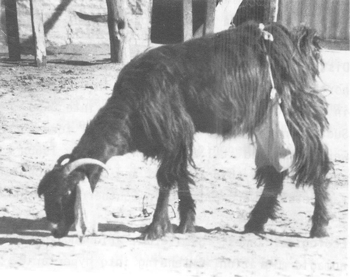
Figure 32 Nubian female goat in Batn elHaggar, Sudan, with udder bag to prevent suckling by kids
Research. Animal Production Research Administration, Ministry of Animal Resources, P.O.Box 293, Khartoum, Sudan. Faculty of Veterinary Science, University of Khartoum, P.O.Box 32, Khartoum North, Sudan.
References. Gray, 1953; El-Nairn, 1979; Abdelaziz, Musa & Ali, 1982; Sulieman & El-Shafei, 1984; El-Tayeb et al, 1987; Abdel Rahim, 1987; Maglad & Kudouda, 1987; Aboul-Ela et al, 1988.
Synonyms. Sudanese Desert.
Origins. Savanna type, similar to West African Long-Legged.
Sub-types and races. Possibly allied to the Shukria goat of western Eritrea, although the latter is probably a much better milk producer, more closely related to the Nubian. It is probable that the so-called Zaghawa goat is a black colour variant of the Sudan Desert type.
Distribution. Dry areas of the Republic of Sudan, generally to the north of 12°N but north of 10°N in Darfur and western Kordofan. Also in parts of Eritrea and westwards into Chad. At its southern limit in Sudan, intermediate types with small forest goats are seen. Numbers ere estimated at 1.0 million in early 1950s but certainly much more numerous than this in 1970s and 1980s. Population figures based on tax returns were 571 000 in Southern Darfur Province alone in 1972.
Ecological zones. Semi-arid, arid and, during transhumance and nomadic migration, extending into hyper-arid.
Management systems. Traditional agro-pastoral and pastoral. Probably originally owned only by nomadic pastoralists but now owned in large numbers by agro-pastoralists. Common and shared use makes it difficult to define ownership patterns and flock sizes: about 20 goats per household in Southern Kordofan. Most goats in agro-pastoral system are "owned" by women. Flock structures related to milk and meat production are dominated by females, especially in age groups over 6 months. In Southern Darfur 46.5 per cent of flock < 6 months (25.7 per cent females, 20.7 per cent males); 12.4 per cent 6-15 months (9.4 per cent females, 3.0 per cent males); 41.1 per cent > 15 months (40.8 per cent females, 0.3 per cent males); total females 75.9 per cent (49.8 breeding > 10 months). In Southern Kordofan agro-pastoral sedentary system 38.0 per cent < 6 months; 15.7 per cent 6-12 months (females 11.6 per cent, males 4.1 per cent); 32.7 per cent 13-24 months (females 30.6 per cent, males 2.5 per cent); 13.2 per cent > 24 months (no males); 55.4 per cent breeding females.
Physical characteristics. Large size 65-85 cm. Weight: male 40-60 kg; female 32.7 ± 5.22 kg.
Head fine, forehead flat, profile straight or slightly dished.
Horns in 95 per cent of both sexes: large and flattened in cross-section in males, homonymously twisted, up to 35 cm long, projecting outwards or backwards; females finer and curving upwards and backwards, up to 30 cm in length. Ears medium to very long (12-20 cm), lopped. Toggles in 15 per cent of both sexes. Beards in both sexes, very bushy in males. Males may have a mane to the shoulders or extending the whole length of the back, mane occasionally present in females.
Neck rather short. Chest shallow and often pinched. Withers prominent (male 69-83 cm; female 65.5 ± 3.73 (s.d.) cm (n=397)). Back short and straight. Croup very weak and sharply sloping with tail set low. Legs long and poorly boned.
Colour variable from white to black, greys common (Figure 33) but many mixed colours: black back stripe in dark colours and grey in light colours. Coat usually short and fine except for mane: some animals (particularly Zaghawa) have longer hair which may be general over the whole body or confined to hindquarters and legs.
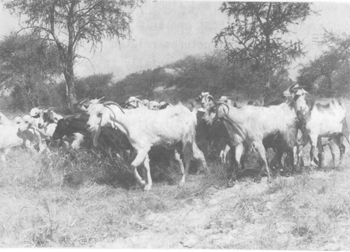
Figure 33 Sudan desert goats on migration in Southern Darfur
Products. Meat; milk.
Productivity.
REPRODUCTION. First kidding: 290 days (n=4) in Southern Darfur; most females kid before eruption of first pair of permanent incisors. Kidding interval: 238 + 41 days (n=44) in Southern Darfur traditional system; 9 months in Kordofan. Multiple births: common; 69.8 per cent single, 30.2 per cent twin (n=63) in first kidders and 39.0 per cent single, 54.5 per cent twin, 6.5 per cent triplet in multiparous females (n=154) in Southern Darfur sedentary agro-pastoral system. Litter size: 1.57; 1.30 in primiparous does and 1.68 in multiparous ones. Annual reproductive rate: 2.41. Lifetime production: 9-10 kids in Southern Darfur; 4-7 in Kordofan.
GROWTH. Birth weight: 2.13 kg; single 2.27 (male 2.30, female 2.25); twin 2.05 (male 2.03, female 2.07); triplet 1.82 (male 1.88, female 1.73). Weight for age: 4 weeks-4.8, 8-7.1, 13-9.9, 20-12.6, 26-14.7 kg. Average daily gain: birth-13 weeks - 86.9, birth-26 - 67.0 g; on high roughage/sorghum bran diet with 30 mg Monensin per day ADG was 89 g from 26.5 to 33.2 kg at a conversion rate of 10.7 feed/gain and on high concentrate/sorghum grain diet with 30 mg Monensin was 93 g at a conversion rate of 9.0 from 29.9 to 34.0 kg.
MEAT. Dressing percentage: entire males 48.2 (44.2-52.8) at live weight of 34.7 kg and castrates 51.2 (46.6-33.1) at live weight of 35.8 kg in Southern Darfur traditional system; 46.0 in central Sudan. Carcass composition: 72.7/28.3 per cent meat/bone at 30 kg empty body weight in fattened animals; tail 0.2 kg, head and skin 3.2 kg, abdominal fat 0.2 kg in 20 kg live weight animals.
Research. Field studies in Darfur in early 1970s and in Kordofan in early 1980s. Faculty of Veterinary Science, University of Khartoum, P.O.Box 32, Khartoum North, Sudan.
References. Wilson, 1976b; Bunderson, Cook & Fadlalla, 1984; El-Hag, El-Haj & Gaali, 1984; El-Hag, Kurdi & Maghoub, 1985.
Synonyms. Arab (Chad); Maure (Mauritania and northern Mali); Sahel; Touareg.
Origins. These goats are part of the Savanna group which includes many Saharan types from Egypt, Libya, Tunisia, Algeria and Morocco.
Sub-types and races. Many local names are given to the West African Long-legged type: Gorane, Peul (Chad); Voltaïque (Burkina); Sahel (Figure 34), Nioro, Niafounké (Mali). Crosses with dwarf goats are also often given names, e.g. Vogan in Togo.
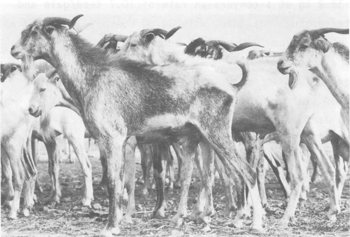
Figure 34 West African Long-legged goats of the Sahel type at Bamako market, Mali
Distribution. North of the 12°N parallel from central Chad in the east to the Atlantic coast in the west, and well into the southern Sahara. In recent years have penetrated farther south, consequent on drought.
Ecological zones. Mainly in the semi-arid but also in the arid zone. A few goats of this type are found in higher rainfall areas but, not being trypanotolerant, they do not survive for long in forest or dense savanna. Many goats of this type are sold in the coastal towns of humid West Africa either having walked or been trucked from the north.
Management systems. Agro-pastoral, pastoral and urban. In the agro-pastoral systems there is very little seasonal movement of stock, when it does take place it is usually of short distance and duration.
CHAD. Sedentary "Arab" flocks in central Chad usually contain 50-70 head of goats and sheep combined (ratio 2:1); in Batha and Chari, Baguirmi goat flocks average 45.0 (+ 43.3 sheep) and 46.3 (no sheep) respectively with an average of 3.8 goats per "taxed person" in the second area. In the Chad long-distance migration pastoral system 85 to 90 per cent of all flocks are mixed goats and sheep, 50 per cent are mixed in short distance migration flocks, and 57 per cent are mixed in agro-pastoral sedentary flocks; flocks of goats only are more common than sheep only. Almost all goats (87.1 per cent of females, 95.3 per cent of males in sedentary flocks; 66.1 per cent of females, 96.0 per cent of males in trans-humant flocks) are born in the flock in which they spend the rest of their lives. Flock structures (Figure 35) are related to meat and milk and comprise about 73 per cent females (51 per cent > 1 year), 27 per cent males (10 per cent > 1 year). Offtake is about 27 per cent per year of which about 30 per cent is for home consumption, 63 per cent is sold (majority males) and 7 per cent is gifts (mainly females).
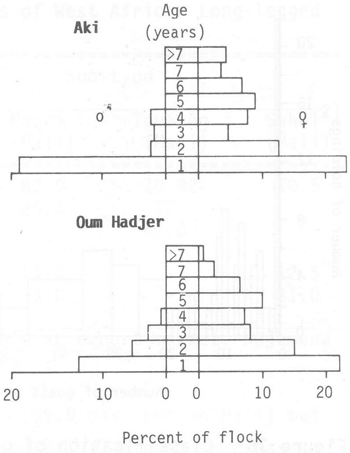
Figure 35 Goat flock structures in different trans-humant ethnic groups in Chad
MALI. In the agro-pastoral system goat flocks in the irrigated rice sub-system average 9.0 ± 6.03 head and in the rainfed millet sub-system 38.2 ± 27.75 head. Flock sizes range from 0-23 in the rice and from 2-91 in the millet areas with more families owning goats in both systems than owning sheep: flock sizes in the transhumant Fulani system in the Gourma average 41. Flock structures are 77.8 per cent females (55.4 per cent > 1 year, 4.0 per cent "broken-mouthed"), 22.2 per cent males (4.2 per > 1 year, 3.9 per cent castrates) in the sedentary systems; in the Gourma transhumant system females are 70 per cent of the flock with a high proportion (67 per cent) of breeding age, males 21 per cent with 6.5 per cent > 14 months of which 3.3 per cent are castrates. Offtake: 26.6 per cent (14.8 per cent females, 53.1 per cent males) in the rice sub-system; about 13.8 per cent (9.0 per cent females, 38.7 per cent males) in the millet sub-system.

Figure 36 Classification of goat holding sizes in a Mossi agro-pastoral system in northern Burkina Faso
BURKINA FASO. Sedentary flocks in the Mossi agro-pastoral system in Yatenga average 17.1 goats and 16.8 sheep (Figure 36). In the Fulani pastoral system, flocks aver-age 53.7 goats and 23.0 sheep: flocks with only goats are more common than flocks of sheep only and these average 61.9 head (compared with 28.7 head). Fulani flock structures are mainly related to milk and meat production: females 76.3 per cent (approximately 60 per cent > 1 year), males 23.7 per cent (10 per cent > 1 year, 3.1 per cent castrates).
NIGER. In the Touareg system in the Aïr goats are not usually herded but feed in the vicinity of the camp in a loose flock, returning to their kids and to be milked at night. Milking is done by women and children. Flock sizes average about 60 head. Flock structure related mainly to milk production: females 86 per cent (67 per cent breeding); males 14 per cent (1.2 per cent > 14 months)
Physical characteristics. Large size 70-85 cm (male 80-85 cm; female 70-75 cm). Weight: male 40 kg; female 27 kg (Table 24).
Head small, fine and triangular in shape, forehead flat and narrow (Chad), slightly concave (Maure) or convex and narrow (Touareg), profile straight or slightly dished (Voltaïque), narrow nostrils, fine lips, large or less large supraorbital processes.
Table 24 Morphological characteristics of West African Long-legged goats
| Character | Sub-type | |||
| Arab 1)(Chad) | Maure (Mali) | Touareg (Mali) | Sahel 2)(Mali) | |
| Withers height (cm) | 80.5 | 82.0 | 70-82 | 70.5 |
| Girth (cm) | 82.0 | 85.0 | 72 | - |
| Scapulo-ischial length (cm) | 69.6 | - | 67.0 | - |
| Horn length (cm) | 21.0 | - | - | - |
| Ear length (cm) | 21.6 | 14.0 | - | 12.5 |
| Weight (kg) | 37.3 | 3.0 | - | 31.0 |
Notes: 1) 8 male sheep about 3 years old at
export market, Ndjamena
2) Mean of 20 full-mouth females
Horns usually present in both sexes (99.9 per cent in Mali) but absent more often in Touareg: strong in males, flattened in crosssection, markedly ribbed, directed straight upwards and backwards diverging more or less then turning inwards at the tips, homonymously twisted with slow spiral, up to 40 cm in length, sometimes horizontal (Figure 37); female horns are finer and scimitar shaped, or curving out and then in, up to 13 cm long. Ears long (21 cm) and wide or shorter (11 cm), usually pendent or semi-pendulous; vestigial ears occur; in Chad can be longer than face. Toggles common: 45 per cent in Mali. Beards common: present in almost all males from 4 months; about 40 per cent of females in Mali over 3 years carry beards. Manes are common in males, occasionally along the whole length of the back.
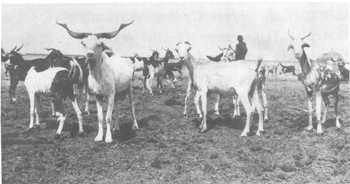
Figure 37 Maure goats near Niafounké in northern Mali (note male and female horn types)
Neck long and thin. Chest generally narrow and shallow, with girth circumference about or slightly exceeding withers height. Withers prominent but less so in Arab variety in Chad. Back usually straight with prominent backbone. Croup short and very sharply sloping. Legs long and spindly, lightly boned and with sickle hocks Udder usually elongated, more or less distinctly divided into two halves with large teats. Scrotum longish and usually split.
Colour is very variable and depends on sub-type: in eastern Chad 45 per cent are white or predominantly white, 28 per cent red or red pied, 22 per cent black or black pied; in western Chad 39 per cent white, 27 per cent black or pied, 25 per cent red or pied; Touareg type normally red pied or black pied; Maure are red pied or fawn pied; Volta&ium,;que 49 per cent white or principally so, 7 per cent cream to red, 3 per cent dark brown pied, 26 per cent red pied, 7 per cent black pied and 8 per cent solid black; in Mali, Sahel type colour is predominantly red or red-pied but whites, greys and blacks also common. Coat is usually of short stiff hair, except for mane (which may be 15 cm long) and occasional animals with long breeches or more general long hair.
Products. Meat; milk; skins.
REPRODUCTION. First kidding: 485 ± 128.9 (s.d.) days (n=307) in central Mali in range 275-1104 days; 455 ± 86 (s.d.) days (n=10) in transhumant system and 13.1 + 1.3 (s.d.) months to 16.5 ± 1.5 months in sedentary system depending on year in Burkina Faso; 407 + 30 (s.d.) days for nomadic Touareg and 387 ± 32 days for Fulani in Niger; 13.7 ± 16.5 months in Chad. Kidding interval: 291 ± 105.2 (s.d.) days (n=1111) in central Mali; 291 ± 73.4 (s.d.) days (n=51) in Burkina agro-pastoral system and 328 ± 85.8 days (n=88) in the pastoral system; 234 ± 9 (s.e.) days (n=177) in Chad; 258 ± 10 (s.e.) days in Niger; births occur all the year round but in all studies there are more parturitions during cold dry season (conceptions in late hot dry season) than at other times of year. Multiple births: fairly common (Table 25); of 1955 parturitions in Mali agro-pastoral system, 1593 (81.5 per cent of parturitions, 68.5 per cent of young) are single, 350 (17.9 and 30.1 per cent) are twin, and 12 (0.6 and 1.5 per cent) are triplet; in Burkina in Fulani flocks 72.1, 27.8 and 0.1 per cent of parturitions are single, twin or triplet; in Niger in Touareg flocks the figures are 74.5, 24.8 and 0.7 per cent and in Fulani flocks are 54.6, 44.1 and 1.3 per cent; in Chad 53.8 per cent of parturitions are of only a single young, 43.7 per cent are twin and 2.5 per cent are triplet. Litter size: 1.24 in single round retrospective survey in central Mali in 1978 (Table 25); 1.19 ± 0.41 (s.d.) (n=1955) in long term study in Mali agro-pastoral system where there were differences due to season of parturition (1.08 in rains related to conception in dry season and 1.25 in cold dry season related to conception in rains) and parity of dam (1.03 in primiparous does and 1.34 in does of fourth and higher parities); 1.21 + 0.41 (s.d.) , (n=126) in Burkina agro-pastoral and 1.05 ± 0.24 (n=461) in the pastoral system where season again had significant effects on number of young born at each parturition; 1.01 to 1.50 in Chad, ranging from 1.12 for primiparous females to 1.74 for multiparous females on station; 1.26 in Niger Touareg flocks and 1.47 in Niger Fulani flocks. Annual reproductive rate: 1.49 in Mali, increasing with parity; 1.51 in Burkina agro-pastoral and 1.17 in pastoral system. Lifetime production: most goats do not exceed 5 parturitions (Table 26). Oestrus cycle: first return to heat 68 days after parturition on station in Chad; heat lasts 24-48 hours. Gestation period: 148 days on station in Niger.
Table 25 Owners' recall data of litter sizes of Sahel goats in central Mali
| Parameter | Physiological age of goat | Overall | |||||
| Pairs permanent incisors | Temporary incisors | ||||||
| 4 | 3 | 2 | 1 | ||||
| Number in sample | 180 | 77 | 61 | 111 | 444 | 873 | |
| Type of birth | |||||||
| single | 457 | 139 | 81 | 77 | 5 | 759 | |
| twin | 203 | 11 | 4 | 1 | 0 | 219 | |
| triplet | 8 | 0 | 0 | 0 | 0 | 8 | |
| Total births | 668 | 150 | 85 | 78 | 5 | 986 | |
| Total young born | 887 | 161 | 89 | 79 | 5 | 1221 | |
| Litter size | 1.33 | 1.07 | 1.05 | 1.01 | 1.00 | 1.24 | |
Table 26 Age (months) and reproductive history of
Fulani (Voltaïque)
goats
in Burkina Faso
| Age class | Number of parturitions | Number of females | Mean births at age | |||||||||||
| 0 | 1 | 2 | 3 | 4 | 5 | 6 | 7 | 8 | 9 | 10 | 11 | |||
| 10-14 | 14 | 14 | 0.00 | |||||||||||
| 15-19 | 29 | 45 | 74 | 0.60 | ||||||||||
| 20-24 | 8 | 21 | 9 | 2 | 40 | 1.12 | ||||||||
| 25-30 | 2 | 40 | 26 | 12 | 0 | 1 | 81 | 1.64 | ||||||
| >30 | 2 | 22 | 42 | 88 | 49 | 32 | 11 | 7 | 1 | 0 | 2 | 1 | 257 | 3.42 |
GROWTH. Birth weight: 2.2 ± 0.64 (s.d.) kg (n=581) in Mali agropastoral system, male 2.3, female 2.1, single 2.4, twin 2.0, young of primiparous does 2.0 and of fourth parity and above 2.3; 2.7-3.2 kg on station in Niger. Weight for age: 10 days-3.0, 30-4.3, 90-7.7, 150-10.9, 240-15.2, 365-20.2, 550-25.2, 730-29.8, 1095-33.6 kg in Mali agro-pastoral system, main environmental influences being system, sex, parity, type of birth, season (Table 27) and year; 10 days-4.4, 30-5.5, 90-9.9, 150-12.8, 240-15.5, 365-19.9 kg in Burkina pastoral system, affected by sex, parity, season and year; similar weights in Chad. Average daily gain: in Mali, birth-150 days - 58.0, birth-365 -49.3, birth-1095 - 28.7 g; in Burkina pastoral system, birth-150 -70.6, 150-365 - 39.7, birth-365 - 49.0 g; in Chad pastoral system, 1 week-weaning - males 80.4 females 67.9, weaning-18 months - males 32.8 females 27.9, 18 months-5 years - males 14.5 females 8.1 g. Post-partum weights: 26.0 ± 5.16 (s.d.) kg (n=1729) in Mali, varying by system, parity, birth type, season, year and flock; primiparous does weigh 21.2 kg and those of fourth parity and upwards 29.4 kg.
Table 27 Weight changes (maximum and minimum averaged for 6 years) by sex and age in central Mali goats expressed as percentages of mean annual weight
| Sex and age1) | Millet sub-system | Rice sub-system | |||||||
| n2) | x3) | Weight (per changes cent) | n2) | x3) | Weight (per changes cent) | ||||
| min | max | min | max | ||||||
| Males: | 1 | 642 | 25.1 | 93.0 | 106.5 | 167 | 24.7 | 91.1 | 107.9 |
| 2 | 380 | 30.3 | 95.6 | 104.6 | 51 | 30.4 | 93.5 | 108.3 | |
| 3 | 309 | 34.7 | 87.6 | 110.5 | 49 | 29.8 | 84.1 | 104.9 | |
| 4 | 385 | 40.9 | 96.8 | 104.9 | 14 | 30.8 | 90.9 | 107.1 | |
| Females: | 1 | 1342 | 20.4 | 91.8 | 105.0 | 218 | 20.9 | 94.1 | 109.3 |
| 2 | 1026 | 22.5 | 91.9 | 106.3 | 145 | 23.3 | 5.4 | 109.2 | |
| 3 | 1300 | 24.9 | 96.2 | 103.1 | 179 | 26.0 | 96.7 | 105.4 | |
| 4 | 4257 | 28.0 | 94.9 | 104.3 | 789 | 28.8 | 97.5 | 107.8 | |
Notes: 1) Age given as pairs of permanent incisors
2) Number of observations in each class of stock
3)Mean annual weight in kg
Weight changes within years in Mali, although significant, are slight and, in contrast to cattle, long term weight changes are not very marked. In Burkina within year variation is considerable, being 88.2-115.8 per cent of the annual mean in the Mossi agro-pastoral system and 87.5-113.4 per cent in the Fulani pastoral system, in both cases for does with 3 pairs of permanent incisors.
MILK. Lactation length: 5-6 months; 134.7 ± 5.6 (s.e.) days (n=173) in range 54 to 155 days on station in Niger, maximum daily yield at 34 days. Yield: 1500 g/d for Maure in Mali, 900 g/d on station in Niger, Touareg 600-800 g/d, Voltaïque 900-1000 g/d; total lactation yield of 77.1 litres on station in Niger. Composition: density 1.030; DM 12.7 per cent; fat 3.9 per cent; lactose 4.6 per cent.
MEAT. Dressing percentage: castrates 49.4 at 26.7 kg live weight, entire males 48.0 at 27.4 kg and females 48.1 at 27.8 kg at central Mali abattoir; 41.9 at 26.8 kg, females 43.3 at 23.3 kg at Farcha (Chad); 45-48 for Voltaique type in Burkina. Carcass composition: "carcass" 47.9 per cent in central Mali, stomachs and intestines 5.0, kidneys 0.5, liver 1.9, lungs and heart 2.6, mesenteric fat 4.4, spleen 0.5, head 6.9, feet 3.2, wet skin 6.7, udder 0.8, gut fill 12.7, blood and body fluids 6.8.
Average carcass weights in Mali were 14.2 kg for all ages and sexes combined and goat dressing percentages were significantly better than sheep, mainly attributable to lighter gut fill. In 1979 and 1980 at Niono in central Mali, goats contributed 36.3 per cent of all meat produced at the municipal abattoir.
SKINS. Chad exported, through official channels, 1 106 000 skins in 1973 and it was estimated that 176 500 were used locally but this was an exceptional year due to the Sahel drought: in 1976, 820 000 skins were exported of which just over half were goatskins each of about 500 g dry weight.
HAIR. Attempts to produce mohair from Sahel goats in Mali by crossing with Angoras during the 1920s to 1940s achieved only limited success on station and the results were not extended to the traditional producer level.
Research. Mainly systems studies carried out by ILCA, EEC and national organizations, the last particularly in Niger and Chad.
References. Dumas & Raymond, 1975; Dumas, 1977; Gerbaldi, 1978; Dumas, 1980; Bourzat, 1980; Wilson, 1981; Alaku & Moruppa, 1983; Wilson & Durkin, 1983; Wilson & Wagenaar, 1983; Wilson, 1984a; Ouedraogo, 1984; Wilson, 1986; Wilson & Light, 1986; Wilson, 1987; Wilson & Sayers, 1987; Wilson, 1988; Wilson & Durkin, 1988; Bourzat & Wilson, 1989.